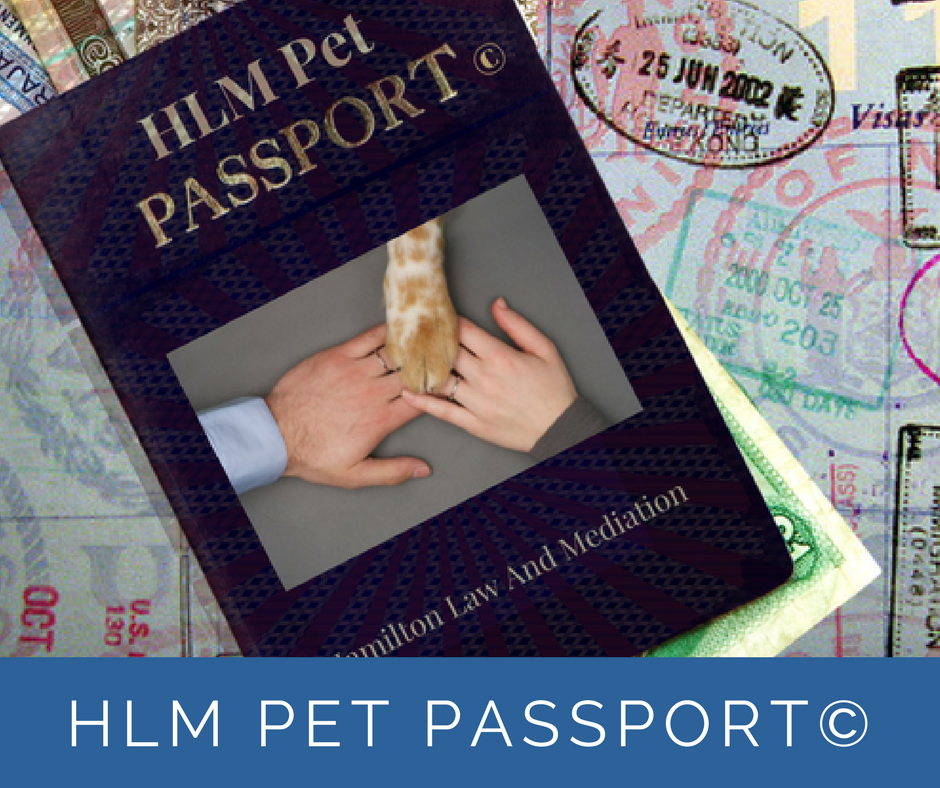By: Debra Vey Voda-Hamilton, Esq.-Mediator
People are passionate about conflict in their life and choose many different ways of addressing it. The manner they select to resolve a disagreement will have an impact on whether the outcome is beneficial or detrimental.
As 2012 ended, two very different conflicts were in the news. The National Hockey League (NHL) was at a standstill in its conflict negotiation between owners and players. The ASPCA was in talks to settle a multi-million dollar RICO claim (1) with Feld Entertainment, producers of Ringling Brothers and Barnum & Bailey Circus, the result of losing a prior court battle over the care and condition of Asian circus elephants. (2)
These cases may seem an unlikely pair to compare and contrast. However, the comparison will illuminate the fact it may be the process used and not the conflict itself that impacts the outcome of a resolution.
The NHL used mediation at two stages of their labor negotiation, which ultimately ended in an agreement between owners and players. This agreement resulted in the start of an abbreviated playing season. The players and owners hired Scot Beckenbaugh and John Sweeney of the Federal Mediation and Conciliation Service to help resolve their outstanding contract issues. Up until then, the parties’ attorneys had been handling the discussions and negotiations directly. After two days of initial discussions between the mediators, parties, and their representatives, the mediators left stating they felt “no progress toward a resolution could be made through further discussions” at this time. (3)Bill Daly, the National Hockey League’s Deputy Commissioner, said, “We are disappointed that the mediation process was not successful.” (4)
But actually, it was successful. What transpired after the two-day session with the mediators is what I call the “lingering after-effect” of mediation. It’s that slow rumination parties tend to engage in after being exposed to an alternative dispute resolution process, which speaks to their hearts and their understanding that they need a one-on-one chat before things can progress. This “after-effect” often leads to parties taking their power back, rolling up their sleeves, getting dirty and becoming part of the decision making process. The parties decided to buy into mediation.
After the initial mediation session, the owners and players decided to sit down with each other alone and talk about what was important to them. This sit-down enabled them to hammer out necessary details for a deal. After these discussions were concluded, the mediator, Scot Beckenbaugh, was recalled to the negotiations and spent the next 48 hours helping create a framework in which the parties could rationally discuss their solutions without anger while embracing the trust necessary for progression to an agreement. Beckenbaugh helped everyone work out their lingering disagreements and got the players back on the ice.
Helene Elliott, in a January 9, 2013 article written for the Los Angeles Times, wrote, “When tensions grew high during the last stage of collective bargaining negotiations between the NHL and the players’ union, the two sides couldn’t sit in the same room. Federal mediator, Scot Beckenbaugh kept the talks alive.” (5) This is what mediators do. They create space in which to keep the conversation alive and listen to the needs of all the parties in conflict.
The owners and the players ratified the agreement. This mediated settlement passed muster. In the end, players and owners complimented Beckenbaugh for keeping the parties at the table. Beckenbaugh was the catalyst for solution. Mediation empowered the parties to take back their discussions and decision-making powers from the “professionals.”
A quite different, but equally emotional, conflict existed between animal activists, including the ASPCA, and Ringling Brothers and Barnum & Bailey Circus. In the original case, the petitioners offered their argument under the Endangered Species Act (ESA). (6) The court found they had no standing under the ESA because their witness had credibility problems. (7) The court entered a decision for the defendant, Ringling Brothers and Barnum & Bailey Circus, after nine years, never having reached the facts being litigated (8) This decision by the court opened the door for the Ringling Brothers to bringing a RICO suit against each petitioner, which they did. After three more years of litigation, Ringling Brothers accepted a negotiated settlement with the ASPCA, on December 30, 2012. (9)The ASPCA decided to fold up its tent and settle in the amount of $9.3 million.(10)
During the course of the case, mediation was court-ordered and failed. Compulsory mediation often ends without resolution. Since the parties did not choose the process, they did not trust it. Animal activists have protested the care and condition of circus animals for years, especially the Asian elephant. In such a long-running dispute the use of mediation needed to be selected by the parties and be a more understanding-based model than the evaluative method typically used in court-ordered mediation. The latter style works well in commercial cases required to mediate business claims. In situations such as the one involving the ASPCA, where emotions run high and trust between the parties is non-existent, a more emotionally supportive and responsive form of mediation should have been used.
In this case, both parties were deeply committed to their positions; they each held an opinion on the care of the Asian elephant, and that the other side simply was not listening to their arguments. If an understanding-based mediator had initially assisted in these animal discussions, they would have placed the parties in the same room, enabled them to have a conversation (possibly without their representatives), which may have resulted in respect for and a feeling by each party that they had been heard. This more collaborative process often results in a better understanding of each other’s position and a resolution can be contemplated after such a conversation. Having the opportunity to discuss this emotional conflict at any time during the 12 years of litigation may have provided them the opportunity to re-examine their positions and make changes positively affecting the elephants’ lives.
Many animal lawyers depict mediation as a process with no place in animal law. They believe animal law disputes should always be litigated in court to create precedent that addresses the more humane treatment of animals. Mediation, since it does not set precedent, is not worth trying because a resolution will not necessarily save future animals from the same plight. By believing in this mantra, the animal law practitioner and activist community may in fact have ironically created their own Achilles heel.
As we saw in the NHL conflict, mediators were brought in at the initial stage of the conflict to initiate discussions. The initial discussion between the parties, facilitated by a mediator, provided the catalyst needed to make a choice and have a voice in how their negotiation would proceed. They could either stay locked into their position with the staunch support of their chosen professionals, or be educated on the law and have a reality-based discussion to explore their bottom lines.
Many times the initial mediation salvo “over the bow” enables conflicted parties to step back and consider a very real alternative. For the NHL the parties alternative was to resume play, which they did, or not. Their positions centered around the difference between an abbreviated season or no season at all. In the ASPCA v. Feld case the alternative is less cut and dry. The ASPCA and fellow plaintiffs feel any exhibition of the Asian elephant is inhumane while Feld believes meeting the tenets of the laws in place to protect the elephants provides them with a basis for the show to go on. Although at first glance these positions seem irreconcilable, mediation can often provide the venue where each sides position is respected and can often lead to the discovery of a third position they may never have considered without this conversation that meets the best interests of the elephants. In emotional conflicts like those involving animals, mediators can keep the parties in the same room and start a much-needed respectful conversation. This opportunity to speak with each other can bridge a difficult process and help all the parties feel respected for their position while reaching a solution they may never have considered in a litigated dispute.
Recognizing the longstanding animosity that the ASPCA and other animal activist groups had for Ringling Brothers and Barnum & Bailey Circus, one can argue using any type of mediation would be pointless. But is it really? If mediated discussions had been attempted, using a more supportive form of the process, which kept the parties together instead of apart, incremental changes may have been made over these last 12 years of pending litigation. In the years it took this case to traverse hallowed legal halls, understanding-based mediation or collaborative practice may have facilitated discussions between the parties that substantially changed the plight or further supported the care of Asian circus elephants. Such an agreement may not have included any of the original results the parties were looking for. Their brainstorming of ideas could have led to new and previously unthought of solutions, such as rotating elephants in and out of the show or providing carefully designed pens the elephants could freely walk around in keeping them and the public safe but unchained. These are only hypothetical suggestions that may have been examined and dismissed. Yet parties, given the opportunity to feel respected for their positions, can often work together on a plan that may have reached a sustainable change in the elephants’ current lifestyle.
Using understanding-based mediation may have created a better outcome for the Asian circus elephant; at the very least it could have done no worse. As difficult as it may be for animal activists to believe a discussion can and should be had in these tense situations, they need only take a page out of the NHL strike playbook to see it work. Guided discussions have, in similarly tense and emotional situations, often reached resolutions in less time, for less money, while retaining a good ongoing working relationship between the parties.
Mediation can and should be a friend to animal law as it was a friend to the National Hockey League.
Debra Hamilton is a solo practitioner in Westchester County NY. Her practice focuses on helping people in conflict over animals solve those disputes by using alternative dispute resolution processes (www.hamiltonlawandmediation.com).
She uses mediation and collaborative process to diffuse conflicts between people in animal-related disagreements. Debra lives in Armonk with her husband Jim and they have two sons. Debra has nine dogs, all of whom live in the house and go to the office with her.
She uses mediation and collaborative process to diffuse conflicts between people in animal-related disagreements. Debra lives in Armonk with her husband Jim and they have two sons. Debra has nine dogs, all of whom live in the house and go to the office with her.
(1) Organized Crime Control Act of 1970 § 901(a), Racketeer Influenced and Corrupt Organizations Act (RICO),
18 U.S.C. § 1961– 68 (1970).
(2) Feld Entertainment, Inc., ASPCA Pays $9.3 Million in Landmark Ringling Bros. and Barnum & Bailey Circus
(2) Feld Entertainment, Inc., ASPCA Pays $9.3 Million in Landmark Ringling Bros. and Barnum & Bailey Circus
Settlement; Feld Entertainment RICO Lawsuit Will Continue against the Humane Society of the United States,
the lawyers, and other remaining defendants (Dec. 28, 2012), http://www.ringlingbrostrialinfo.com.
(3) Jeff Klein, Mediators Leave After Two Days: Lockout Gap Remains, New York Times, Nov. 29, 2012,
available athttp://www.nytimes.com/2012/11/30/sports/hockey/mediators-walk-out-as-nhl-and-union-stay-far-apart.html.
(4) Id.
(5) Helene Elliott, Duck Fans Salute Mediator Who Helped Resolve NHL Labor Disputes, L.A. Times (Jan. 9, 2013,
12:49 PM), http://www.latimes.com/sports/sportsnow/la-sp-sn-fan-nhl-beckenbaugh-20130109,0,7962150.story
(6) Endangered Species Act of 1973, 7 U.S.C. § 136; 16 U.S.C. § 1531 (1973).
(7) American Soc. for Prevention of Cruelty to Animals v. Feld Entertainment, Inc. United States, 2011 WL 5108581 (C.A.D.C.), available at http://www.animallaw.info/cases/causfd2011wl5108581.htm(last visited Feb. 16, 2013).
(8) American Soc. for Prevention of Cruelty to Animals v. Feld Entertainment, Inc. United States, 677 F.Supp.2d 55,
(6) Endangered Species Act of 1973, 7 U.S.C. § 136; 16 U.S.C. § 1531 (1973).
(7) American Soc. for Prevention of Cruelty to Animals v. Feld Entertainment, Inc. United States, 2011 WL 5108581 (C.A.D.C.), available at http://www.animallaw.info/cases/causfd2011wl5108581.htm(last visited Feb. 16, 2013).
(8) American Soc. for Prevention of Cruelty to Animals v. Feld Entertainment, Inc. United States, 677 F.Supp.2d 55,
2009 WL 5159752 (D.D.C., 2009), available at http://www.animallaw.info/cases/causfd2009wl5159752.htm(last visited Feb. 16, 2013).
(9) Feld Entertainment, Inc., supra note 2.
(10) Id.
(9) Feld Entertainment, Inc., supra note 2.
(10) Id.





